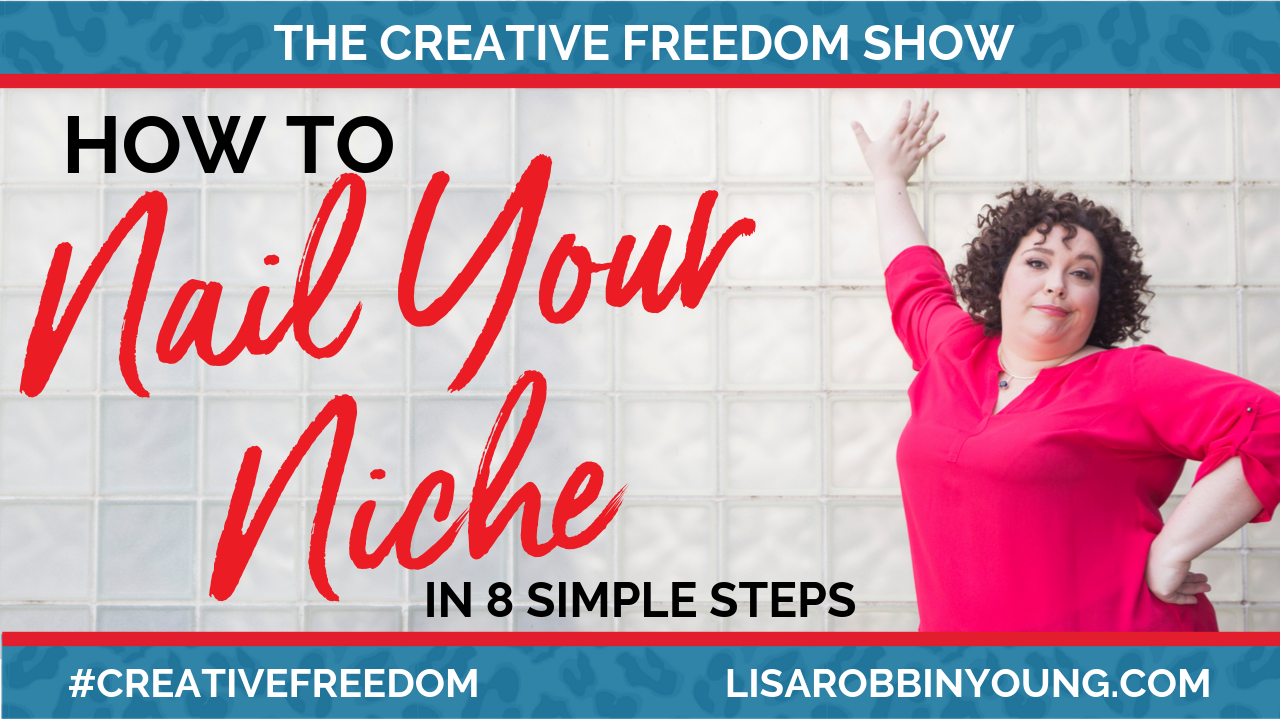Tag: success
-
How To Better Yourself As An Entrepreneur
There are a lot of things that go into being a successful entrepreneur. Time management. Organizational skills. Being able to make confident decisions under pressure. Your self-improvement work never really ends. Someone once said that entrepreneurship is one of the toughest personal development programs in the world, and I don’t think they were wrong. While…
-

Nail Your Niche: How to find a profitable niche for your creative business in 8 easy steps
As a creative entrepreneur, finding a niche can feel challenging if you don’t solve a “problem” or “pain” with your Great Work. In this episode, I’m stealin’ a process from the manufacturing world to help you hone in on why clients buy from you and how to find more clients just like ’em.
-

Charge More and Do Less: How to change your mindset around pricing your creative work
[Creative Freedom S5E7] If you’re a heart-centered creative entrepreneur struggling with pricing, there’s good news: you don’t have to subsist on a survival-level income, and you don’t have to price gouge your clients in order to be successful. There’s a middle ground that’s profitable and sustainable. Your pricing tells a story, and it’s personal. For…
-
Setting goals for 2019? Answer these questions first!
If you’re like a lot of creative entrepreneurs, you might still be scrambling to put your goals down on paper for the year. In fact, several guru-types are only just now getting around to leading those goal planning workshops. The folks in A-Club and the Incubator did their annual planning before December, so that they could…
-
What Avengers: Endgame can teach you about content marketing
Marvel just dropped the official trailer for the upcoming film, Avengers Endgame. Filming began in August 2017, in the can since January, and in post production since October. Fans have been dropping concept trailers since August. But the current release date is scheduled for the end of April, 2019! You can’t buy tickets this early. So why drop…
-
Mistakes & Lessons From 10 Years of Hosting Live Events
In our last episode, I shared some tips to know if an event is worth attending or not. This week, it’s only fair I offer some tips and lessons learned from my past 10+ years of doing live events. From basic teleclasses and online concerts to big, multi day virtual and in-person events, here are 8 lessons…
-
How to Raise Your Rates And Your Income [Creative Freedom S4E6]
Okay, so it’s time to raise your rates, but how? Welcome to Episode 6 of the season! It’s the logical follow-up to last week’s episode sharing 11 signs that you need to charge more. So now that you’re clear you need to charge more, here are 7 ways to make it happen without feeling icky about…
-
Episode Six: How to Raise Your Rates (and get paid!)
This is Season Four, Episode Six. This is the next logical step after our last episode. Once you get clear that it’s time to raise your rates, how, exactly do you go about raising them? Have a listen to this week’s episode, where I walk you through a few different approaches, from the basic, Nike approach…
-
Episode 5: 11 Signs You Need To Charge More
This is Season Four, Episode Five. This one’s all about the dolla billz, baby! Whether you’ve raised your prices in the last year or the last month, it could be time to raise them again if they didn’t go high enough in the first place. Many creative entrepreneurs get emotional when it comes to price increases.…